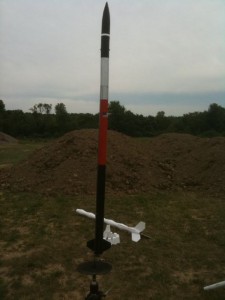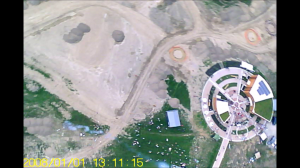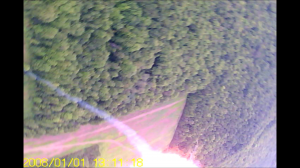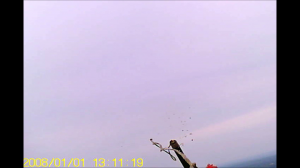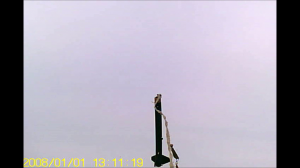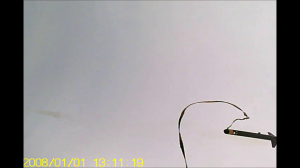Perseus X4 “Zephyr” launches, and concludes service in the the first in a series of “bridge missions”…
(August 20, 2011 – Observatory park)
Perseus X4-03 “Zephyr” successfully completed two flights involving deployment of its main parachute via computer control at the opening ceremonies at Observatory Park in Geauga county (Ohio) today. These missions were slated to be the last two for Zephyr before being retired.
While deploying parachutes under computer control is not a first in model rocketry by any stretch of the imagination, it is a first for me – the guy who has been away from model rocketry for about 21 years. In catch up mode.
Zephyr’s first flight was just about picture perfect. The On-Board flight computer performed flawlessly at deploying the parachute right at apogee, and logging flight data. Zephyr hit a top speed of 210 MPH on an E-18 engine, and reached an apogee of 709 feet on mission PLS-36. At completion, Zephyr suffered some damage from a higher than expected decent rate.
Most of the damage was repaired in time for mission PLS-37.
During flight PLS-37, again, the flight was very good, with some “coning” noted as Zephyr approached apogee – no doubt residual effects of the earlier damage. Zephyr reached an altitude of 720 feet, and came down slowly under a larger parachute. Quite a fitting ending for a rocket that has been on the cutting edge of experiments since it’s first flight over a year ago.
Missions PLS_036 and 037 are being considered the first in a series of “Bridge Missions”. These missiosn are designed to test flight computer systems to get the feel for them and how they will likely function in the new X6 rocket (Perseus V).
The bridge missions will continue in about a month with the flight of an all new Perseus X4 rocket Vega. Vega will be designed for dual deployment flights. The data obtained in that flight will be very important to prepare for the maiden flight of the Perseus V rocket.
Details to come…
((( )))
